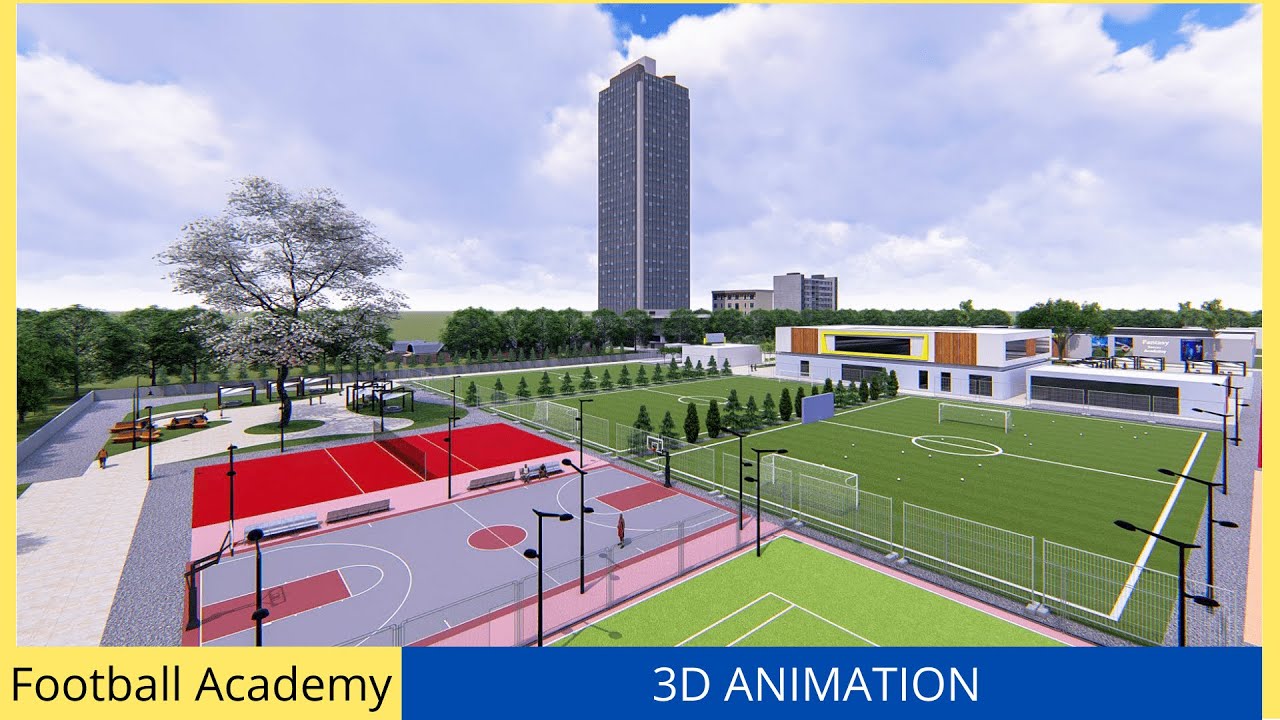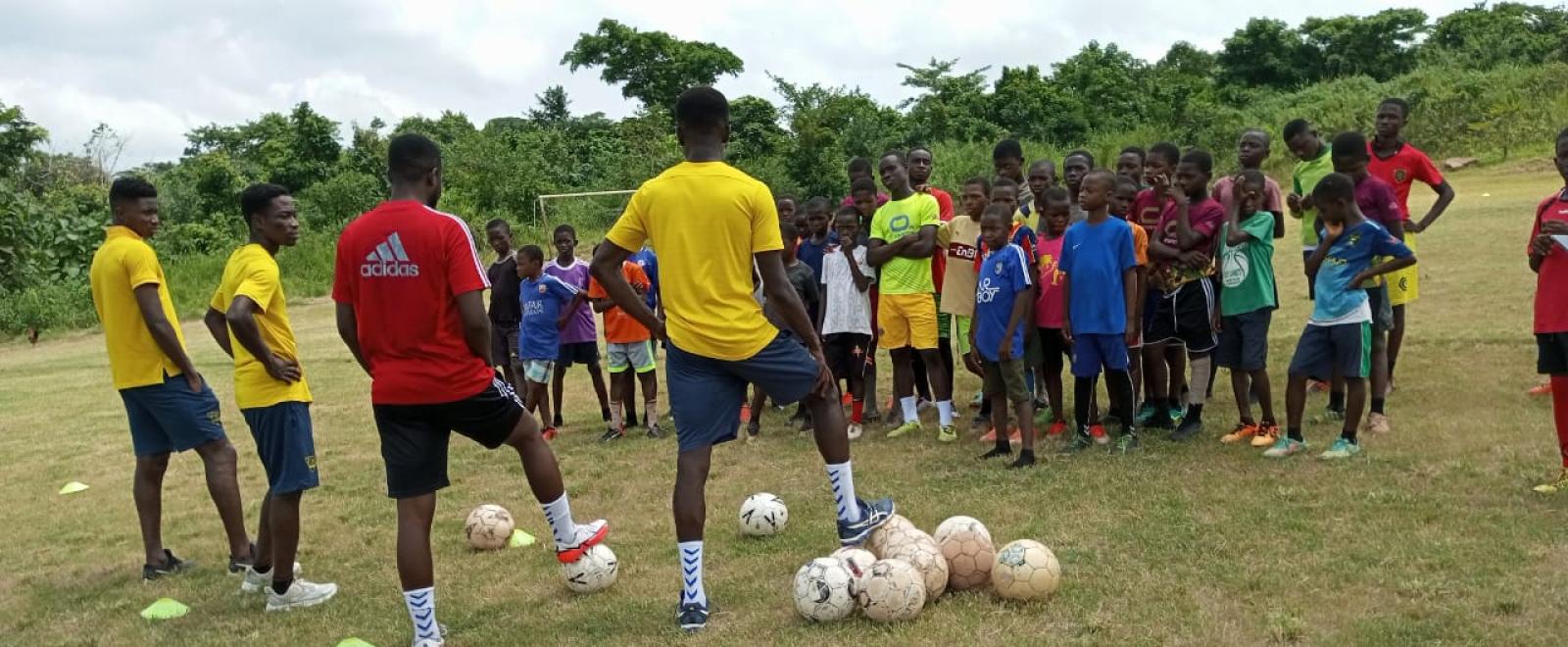The Basics Of A Football Project
Football projects are initiatives aimed at improving the quality of football in a particular region, country, or even globally. These projects have different objectives, but they are all aimed at improving the standard of football, promoting the sport, and increasing participation levels. This article will discuss the various aspects of a football project, from its objectives to its key components.
Objectives Of A Football Project
The objectives of a football project depend on its scope and goals. Some projects are aimed at developing young talent, while others are geared towards improving infrastructure, such as stadiums and training facilities.
Some projects may focus on promoting the sport among marginalized groups, such as women or disadvantaged communities. Regardless of the specific objectives, football projects generally aim to:
- Improve the standard of football
- Increase participation levels
- Promote the sport
- Develop young talent
- Improve infrastructure
- Promote diversity and inclusion

Football academy design
Key Components Of A Football Project
A football project typically has several key components that are critical to its success. These include:
Coaching And Training
One of the most important components of a football project is coaching and training. Good coaching is essential to developing young talent and improving the standard of football. Football projects may provide coaching and training for both players and coaches. This may involve hiring experienced coaches or providing training courses for existing coaches.
Infrastructure
Infrastructure is another critical component of a football project. This includes facilities such as stadiums, training pitches, and locker rooms. Football projects may involve building new infrastructure or upgrading existing facilities. Infrastructure improvements can have a significant impact on the quality of football and can attract more fans to the sport.
Marketing And Promotion
Marketing and promotion are essential to the success of a football project. These activities help to increase the visibility of the sport and attract new fans. Football projects may involve advertising campaigns, social media marketing, or other promotional activities to reach a wider audience.
Youth Development
Developing young talent is a critical component of any football project. This involves identifying and nurturing young players with the potential to become professional footballers. Football projects may involve setting up youth academies or scouting programs to identify promising young talent.
Community Engagement
Football projects can also have a significant impact on the communities in which they operate. Community engagement activities may include coaching clinics, charity events, and other initiatives aimed at promoting the sport and improving the lives of local residents. Football projectsmay also involve partnerships with local schools or community organizations.
Examples Of Football Projects
There are many examples of successful football projects around the world. One such project is the Premier Skills initiative, which is a partnership between the English Premier League and the British Council. The project provides coaching and training to young people in developing countries, promoting the sport and developing young talent.
Another example is the Football for Development program in Rwanda, which uses football to promote community development and social change. The program uses football to teach life skills, such as teamwork and leadership, and works with local communities to improve infrastructure and promote social inclusion.
- Football for Peace: This project aims to promote peace and social cohesion through football. It brings together young people from diverse backgrounds and uses football as a tool for building relationships, promoting understanding, and fostering reconciliation. They were help by teams like Barcelona and you can learn about that team reading this articlefrom Purenetworth.
- Kick it Out: This is an anti-discrimination campaign that uses football as a platform to raise awareness of issues related to discrimination and promote equality and inclusion. It works with professional football clubs, grassroots organizations, and schools to educate young people about discrimination and promote positive attitudes and behavior.
- Street League: This project aims to tackle youth unemployment through football. It provides coaching and training opportunities for young people, helping them to develop skills and gain qualifications that can lead to employment. It also uses football as a tool for building confidence and self-esteem, and promoting social interaction and community engagement.
- Premier League Kicks: This project provides free football coaching sessions for young people in disadvantaged communities. It aims to promote participation in sport, build positive relationships between young people and the police, and provide opportunities for personal and social development.
- Homeless World Cup: This project aims to tackle homelessness and social exclusion through football. It brings together homeless people from around the world to compete in a football tournament, providing opportunities for social interaction, personal development, and the promotion of human rights.
Challenges Of Football Projects
Despite their potential impact, football projects face several challenges that can hinder their success. These include:
Funding
One of the biggest challenges facing football projects is funding. Building new infrastructure, hiring coaches, and providing training can be expensive, and many projects struggle to secure sufficient funding. This can limit the scope and impact of a project, making it more difficult to achieve its objectives.
Political And Social Issues
Football projects can also be affected by political and social issues. This may include corruption, conflict, or discrimination. These issues can make it difficult to implement a project successfully and can lead to tension between different stakeholders.
Talent Drain
Another challenge faced by football projects is the talent drain. In some cases, young players may be identified and developed by a project, only to leave for better opportunities elsewhere. This can make it difficult for a project to sustain its impact over the long term.
Sustainability
Finally, football projects must be sustainable to have a lasting impact. This means that they must be able to continue operating even after their initial funding or support has ended. Sustainability requires careful planning, strong partnerships, and effective management.
Future Of Football Projects
The future of football projects looks bright, with many initiatives being launched around the world. The COVID-19 pandemic has highlighted the importance of sport and physical activity for health and well-being, and football projects are well-positioned to promote these benefits. With continued investment and support, football projects can help to promote the sport, develop young talent, and drive positive social change for years to come.
The Impact Of Football Projects On Local Communities
Football projects have the potential to make a significant impact on local communities. By promoting the sport and using it as a tool for social development, football projects can help to improve the quality of life for people in the community.
One of the key impacts of football projects is on the physical health and well-being of participants. Football is a highly physical sport that requires strength, endurance, and agility, and regular participation can have significant benefits for overall health and fitness. By promoting football and providing opportunities for people to play, football projects can help to combat sedentary lifestylesand promote physical activity.
How To Start A Football Project
If you are interested in starting a football project, there are several steps you can take to get started:
- Identify the need: Start by identifying the need for a football project in your community. This may involve researching the local football landscape and identifying gaps or areas for improvement.
- Develop a plan: Once you have identified the need, develop a plan for your project. This should include objectives, target groups, activities, and a budget.
- Build partnerships: Building partnerships with local organizations, government agencies, and other stakeholders is essential for the success of your project. This can help to secure funding, resources, and support.
- Recruit volunteers: Recruiting volunteers to help run your project can be a great way to build community support and involvement. Look for individuals who are passionate about football and committed to making a difference.
- Launch your project: Once you have developed your plan, built partnerships, and recruited volunteers, it's time to launch your project. This may involve hosting a kick-off event, setting up training sessions, or organizing tournaments.
- Evaluate and adjust: After launching your project, it's important to evaluate its impact and make adjustments as necessary. This may involve collecting feedback from participants, monitoring outcomes, and adjusting your activities or approach as needed.
People Also Ask
What Is The Aim Of The Project Football?
The aim of a football project is to improve the quality of football and promote the sport. This may involve developing young talent, improving infrastructure, promoting educationand social inclusion, and driving positive social change.
What Can I Write About Football?
There are many topics you can write about when it comes to football. Some possible topics include the history of football, famous players and teams, the rules of the game, the tactics and strategy involved in playing football, the social and cultural impact of football, and the role of football in promoting health and well-being.
What Is Football Gameplay?
Football gameplay refers to the actual play of the sport, including the rules, tactics, and strategy involved in the game. Football gameplay typically involves two teams of 11 players each, trying to score goals by getting the ball into the opposing team's net. The game is played on a rectangular field, and players use their feet and other parts of their body to control the ball and pass it to teammates. The team with the most goals at the end of the game is declared the winner.
Conclusion
Football projects are initiatives aimed at improving the quality of football and promoting the sport. They face several challenges, including funding, political and social issues, talent drain, and sustainability, but there are many success stories around the world. With continued investment and support, football projects can help to promote the sport, develop young talent, and drive positive social change for years to come.

